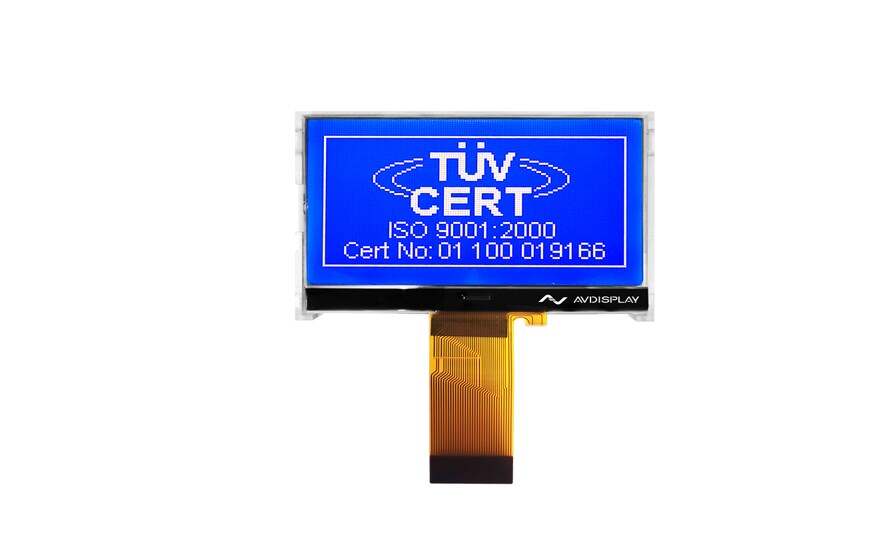Email format error
Email cannot be empty
Email already exists
6-20 characters(letters plus numbers only)
The password is inconsistent
Email format error
Email cannot be empty
Email does not exist
6-20 characters(letters plus numbers only)
The password is inconsistent


In the realm of electronic displays, technological innovations are constantly pushing boundaries to enhance device performance, reduce costs, and improve user experiences. Among these advancements is the COG display, short for "Chip-on-Glass." This display technology offers unique advantages, particularly in compact electronic devices requiring precision and efficiency.
This article delves into the details of COG displays, explaining their structure, working principles, advantages, limitations, and key applications.
A COG display integrates the driver IC (integrated circuit) directly onto the glass surface of the display panel. By mounting the chip directly on the glass, this technology minimizes the space required for wiring and reduces the overall thickness of the display module.
Unlike traditional designs where driver ICs are mounted on separate circuit boards or film substrates, COG displays eliminate the need for intermediate connectors. This creates a more compact and reliable assembly compared to other technologies like COB (Chip-on-Board) or TAB (Tape Automated Bonding).

The driver IC is directly bonded to the glass using anisotropic conductive film (ACF). This film ensures electrical connectivity while providing mechanical adhesion. The absence of traditional connectors simplifies the assembly and reduces failure points.
The chip-on-glass construction eliminates bulky components, making COG displays an ideal choice for devices where space is a premium, such as smartwatches and medical instruments.
With fewer connections and components, COG displays offer enhanced durability and reduced susceptibility to mechanical failures or connectivity issues.
By combining the IC and glass substrate into a single unit, manufacturers can lower production costs by simplifying the design and assembly processes.
COG technology supports high-resolution displays, making it suitable for devices requiring crisp visuals and precise graphics.
COG displays are often designed for low power consumption, which is essential for battery-operated devices.
While the integration of components into the glass makes the module compact, it also increases the risk of breakage due to the inherent fragility of glass substrates.
If the IC or connections are damaged, repairing COG displays can be more complex and costly compared to other types of displays.
COG displays are best suited for small to medium-sized devices. For larger screens, other technologies such as COB or LED-backlit displays may be more practical.
COG displays are widely used in devices like:
Industrial applications benefit from COG displays for their durability and precision, such as:
In the medical field, where compactness and reliability are crucial, COG displays power devices like:
COG displays are often integrated into automotive components like:
There are several reasons to choose COG (Chip on Glass) display technology for your electronic devices:
7.1 Compact Design:
COG displays have a compact design that allows for a thinner and lighter overall product design. This makes them ideal for devices where space is limited.
7.2 High Resolution:
COG displays offer high resolution and sharp image quality, making them suitable for applications where detailed visuals are important.
7.3 Low Power Consumption:
COG displays consume less power compared to other display technologies, making them energy-efficient and extending the battery life of devices.
7.4 Cost-Effective:
COG displays are cost-effective to manufacture, making them a budget-friendly option for businesses looking to keep production costs low.
7.5 Durability:
COG displays are known for their durability and resistance to shock and vibration, making them suitable for use in rugged environments.
7.6 Customization
Options: COG displays can be easily customized to meet specific design requirements, allowing for flexibility in product development.
Overall, COG displays offer a combination of high performance, energy efficiency, durability, and cost-effectiveness, making them a popular choice for a wide range of electronic devices.
COG displays represent a significant advancement in display technology, combining compact design with cost-efficiency and reliability. While they may not be the best fit for every application, their strengths make them a popular choice in many industries.
If you’re designing a product and considering display options, COG displays might just be the ideal solution for your needs. Carefully evaluate your requirements for size, durability, and resolution to determine if this technology aligns with your goals.